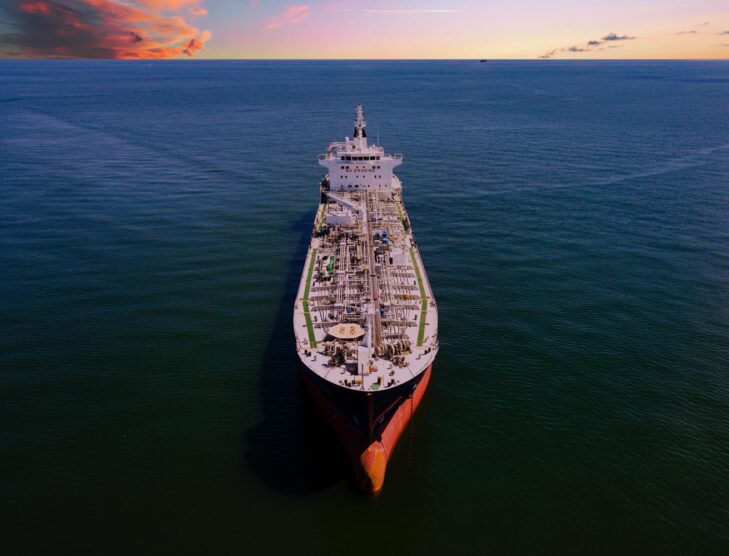
Lubricant supply chain: The domino effect
It has been a little over two years since the start of the Covid-19 pandemic. As a business owner, it might feel like it has been much longer. Covid-19 has stretched global lubricant supply chains to breaking point, and many businesses are facing extreme supply challenges in their day-to-day operations.
How did we get ourselves into this predicament? Demand for oil, and indeed finished lubricant products, fell off a cliff in the early stages of 2020. Oil companies, concerned about their survival, quickly cut production, reduced product lines, closed or divested poor performing locations and adjusted profit margins.
At the time, it was difficult to foresee demand rebounding so quickly. But it did. And now we are left in the precarious position of playing catch up—while navigating ongoing Covid-19 impacts. Supply chains are wavering under the weight of demand, creating extraordinarily challenging times for many in the lubricants sector.
Supply chain issues prompted an unprecedented increase in lubricant prices in 2021. Trade journal JobbersWorld highlighted no less than six price increases in North America with an average rise of 14%. This ratcheted up the price of lubricants a scarcely believable 116%. For reference, the previous highest annual increase was 27% in 2011.
Finished lubricant pricing is determined by a variety of inputs. Base oils and additives are particularly influential, and then there are packaging, freight, manufacturing and labour costs. Price increase notifications from lubricant manufacturers emphasised the difficulty of obtaining raw materials—reduced additive supply and higher base oil prices, a tight transportation market, higher packaging costs and other inputs.
Early this year, force majeure from a major additive supplier’s key supply base in the United States was felt even in Asia. A force majeure clause is a clause in a contract or supply agreement that allows relief to certain parties if events outside of the parties’ control prevent one or both of the parties from fulfilling their obligations under the contract. There have been rumours of force majeure clauses being implemented. Thavattchai Tantikovit, a consultant with Thailand’s SFC Excellence Company Limited, responsible for the sourcing and procurement of raw materials for lubricants manufacturing, told F+L Magazine they are aware of force majeure clauses being employed, but did not elaborate on the specific parties involved.
The pandemic and economic rebound have created the perfect storm of shortages and delays and the interconnectedness of global supply chains has created a domino effect around the globe. Though, some analysts have been quick to point out that supply chain issues existed well before Covid-19.
A logistics report from The Wall Street Journal on February 10 claimed that container ships are waiting an average of 18 days to unload at the busy Port of Los Angeles in California, U.S.A., the main port where goods from China are unloaded. Before the pandemic, it was unusual for ships to wait at all. Although, the report did note signs of improving through put at the marine cargo terminal operator Yusen Terminals LLC facility. Slow port logistics are not the only logistical headache. Even when containers eventually make it to shore it is difficult to secure delivery. An estimate from the American Trucking Association indicates the U.S. is short of more than 80,000 truckers—pushing up wages and costs.
Pushback is inevitable when prices increase. However, a constrained supply of finished lubricants has left certain grades and types in extraordinarily short supply—such as passenger car motor oil (PCMO), heavy duty engine oil (HDEO), and gear oil—leaving lubricant marketers little choice when faced with higher prices. Many businesses have faced strict allocations or been forced to transition to alternative formulations or suppliers for affected types and grades.
Prices will continue to be a moving target in 2022 with several companies already announcing further price increases. According to JobbersWorld, Valvoline implemented an 8% average price increase on February 1, 2022. A further increase of up to 20% was announced on March 3, effective April 3, 2022. Chevron hiked prices up to 25%, effective March 28, 2022, due to the “increasing costs of raw materials and supply chain-related costs.” Shell Oil Products US (SOPUS) implemented an increase of up to 25% on the list prices of Shell, Pennzoil and Quaker State-branded packages and bulk lubricants, greases, and specialty products effective March 1, 2022.
In a letter to customers, sighted by F+L Magazine, ExxonMobil advised customers that market conditions have resulted in further increases in costs for raw materials, transportation and manufacturing. A finished lubricant price increase of up to 15% is effective March 16, 2022. A further price increase has also been announced for April 15, 2022.
Similar announcements have been flagged by other U.S. lubricant companies. Phillips 66 Lubricants’ prices rose 15% from March 7, 2022 despite its “best efforts” to limit impacts on product manufacturing. From April 1, 2022, Castrol and bp are effecting a price increase of up to 20% on certain branded passenger car, commercial and synthetic finished lubricants. Again, the changes are attributed to raw materials, packaging and transportation issues. The supply chain is broken, it seems.

Base oils, which represent 70 to 80% of an engine oil formulation, are a strong driver of lubricant price increases. A barrage of base oil price increases in 2021 contributed to the glut of price rises throughout the year. Speaking to Bloomberg in early January 2022, on the overheated crude oil market, Oman’s Oil Minister Mohammed Al Rumhi said “we don’t want to see USD100 a barrel. The world is not ready for that.” While many impacted companies have been hoping that supply and demand will begin to balance out, the advent of war in Ukraine sent crude oil prices skyrocketing to a 13-year high of USD130 per barrel in early March. Supply uncertainty may be here for some time yet.
Early in 2021, lubricant manufacturers and blenders navigated supply chain issues by absorbing compressed margins. However, many are now reporting strong growth—meaning tight supply is not necessarily hitting them in the pocket.
Valvoline released results for the first quarter, ending December 31, 2021, in a webcast on February 8, 2022. The U.S.-based manufacturer and marketer of Valvoline-brand lubricants unveiled strong headline growth of 31% in total sales, with its retail services business achieving 36% sales growth and global product sales increasing 28%. The company achieved 5% growth in adjusted EBITDA (earnings before interest, taxes, depreciation, and amortisation) and 12% growth in adjusted EPS (earnings per share). Valvoline continues to see “exceptional top-line growth, both year-over-year and versus the pre-pandemic period two years ago,” says Mary Meixelsperger, chief financial officer, Valvoline.
Valvoline CEO Sam Mitchell acknowledged cost pressures from raw materials and disruptions in the supply chain, however, he noted that raw material costs had become more stable in recent months. He also observed that the company had made good progress in passing through cost increases and expects to continue efforts to recover costs moving forward. A large volume of Valvoline’s U.S. customers are on quarterly or long-term contracts with pricing adjusted every quarter—which mitigates price cost lag effects. Mitchell also outlined that supply chain challenges had led to higher logistics costs and lower levels of inventory than they typically carry, resulting in manufacturing inefficiencies.
Quaker Houghton, a global leader in industrial process fluids, also reported a bumper year, despite supply chain constrictions, with record full-year net sales of USD1,761.2 million for 2021. Fourth-quarter net sales of USD447 million increased 16% compared to the fourth quarter of 2020. The company outlined increases in selling price and additional net sales from acquisitions of 4%, which were “slightly offset” by a decrease in sales volumes.
The results attributed a 2% decline in sales volumes due to constrained demand from the automotive sector—which is facing its own severe supply constraints—and delayed shipments impacting new business wins in the quarter. Fourth quarter adjusted EBITDA declined 7% to USD60.7 million due to lower gross margins—attributed to increased raw material and other costs, supply chain and logistics cost pressures as well as a changing product mix.
SFC Excellence, which was established in 1975, is among the leading lubricant toll blenders in Thailand. The company has managed to navigate the supply chain upheaval relatively unscathed, says Thavattchai.
Thavattchai highlighted major base oil Group II supply issues in 2021 and the impacts of freight rates and availability, especially the dry containers, in delays to raw material arrival. He emphasised the importance of an advanced plan on procuring raw materials and watching price trends closely to choose the best buying/selling strategies. Thavattchai foresees further price rises and raw material shortages moving forward, noting that prices have already risen off the back of the Russia-Ukraine conflict.
While lubricant manufacturers seem to be weathering the storm through price rises, the big question is when will the supply chain return to “normal”? There are many differing perspectives. A recent viewpoint from Argus Media suggested the base oil market will continue to face increased tightness for the first half of 2022. However, this prediction was made before the Russian invasion of its neighbour, Ukraine.
Neil Canter, president of Chemical Solutions and technical advisor to the Society of Tribologists and Lubrication Engineers (STLE) paints a bleaker picture. He told Plant Engineering he expects manufacturers to be dealing with supply chain issues for the balance of the decade—until more regional supply chains are established and reliable sourcing of raw materials is achieved.
The reality is, we don’t know exactly when the pressure on supply chains will ease. However, companies and governments are increasingly realising that supply chains need to be reimagined and reconfigured to better adapt to ongoing uncertainty.







